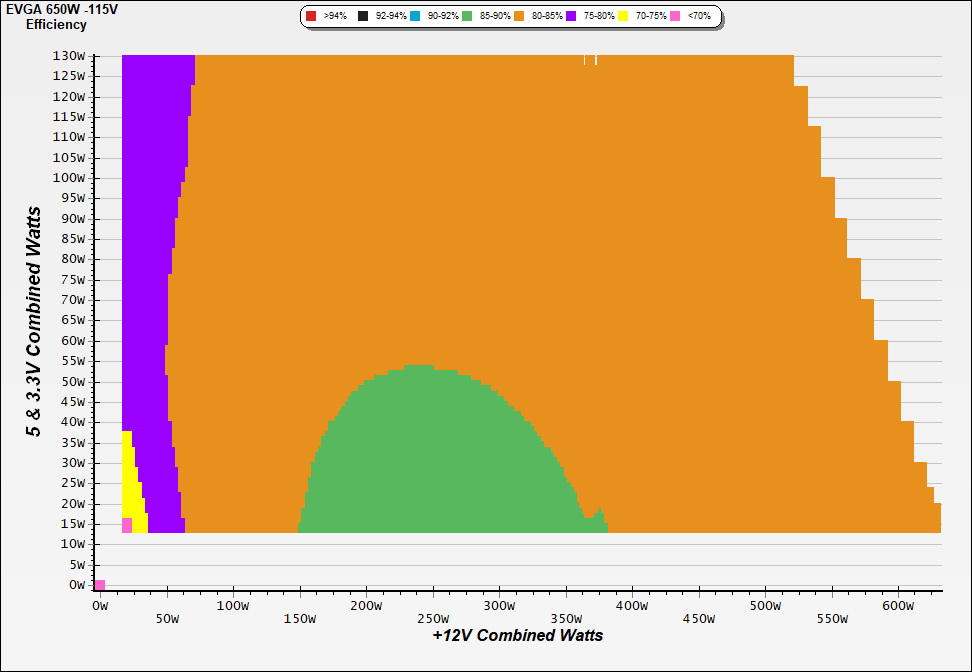Why you can trust Tom's Hardware
Protection Features
Check out our PSUs 101 article to learn more about PSU protection features.
Protection Features | Row 0 - Cell 1 | Row 0 - Cell 2 |
OCP (Cold @ 25°C) | 12V: >72.8A (>140%), <11.423V, 107.31mV ripple | Tested with 2A at 12V 5V:19.4A (97%), 4.75V 3.3V: 34.2A (142.5%), 3.268V, 71.7mV ripple |
OCP (Hot @ 34°C) | 12V: >72.8A (>140%), <11.436V, 132.27mV ripple | Tested with 2A at 12V 5V: 19.2A (96%), 4.751V 3.3V: 34A (141.67%), 3.267V, 57.73mV ripple |
OPP (Cold @ 28°C) | 844.99W (130%) | |
OPP (Hot @ 33°C) | 845.89W (130.14%) | |
OTP | ✓ (169°C @ 12V Heat Sink) | |
SCP | 12V to Earth: ✓ 5V to Earth: ✓ 3.3V to Earth: ✓ 5VSB to Earth: ✓ -12V to Earth: ✓ | |
PWR_OK | Accurate but lower than 16ms | |
NLO | ✓ | |
SIP | Surge: MOV Inrush: NTC Thermistor |
We could easily kill this PSU since OCP (overcurrent protection) at 12V is not correctly set, but we aborted the test and let it live since we only have one sample to conduct all tests. The 5V rail was unable to deliver its advertised full power, while the 3.3V rail's OCP is sky-high, so ripple on this rail gets out of control. Finally, the Over Power Protection should be lower than 130%, given the platform's capabilities. The good thing is that there is OTP (over temperature protection), which is essential to any PSU.
DC Power Sequencing
According to Intel’s most recent Power Supply Design Guide (revision 1.4), the +12V and 5V outputs must be equal to or greater than the 3.3V rail at all times. Unfortunately, Intel doesn't mention why it is so important to always keep the 3.3V rail's voltage lower than the levels of the other two outputs.
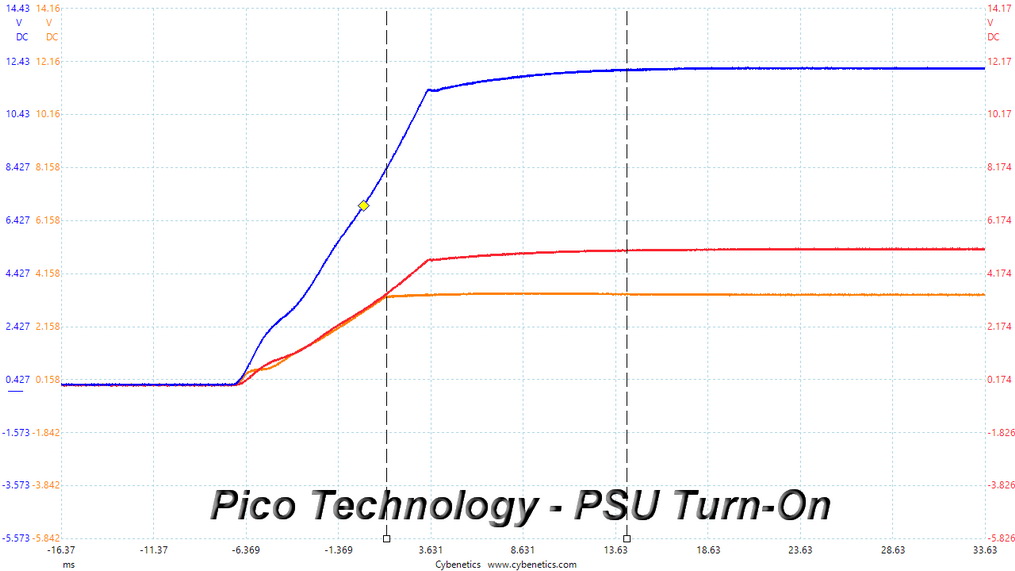
DC Power Sequencing Scope Shots
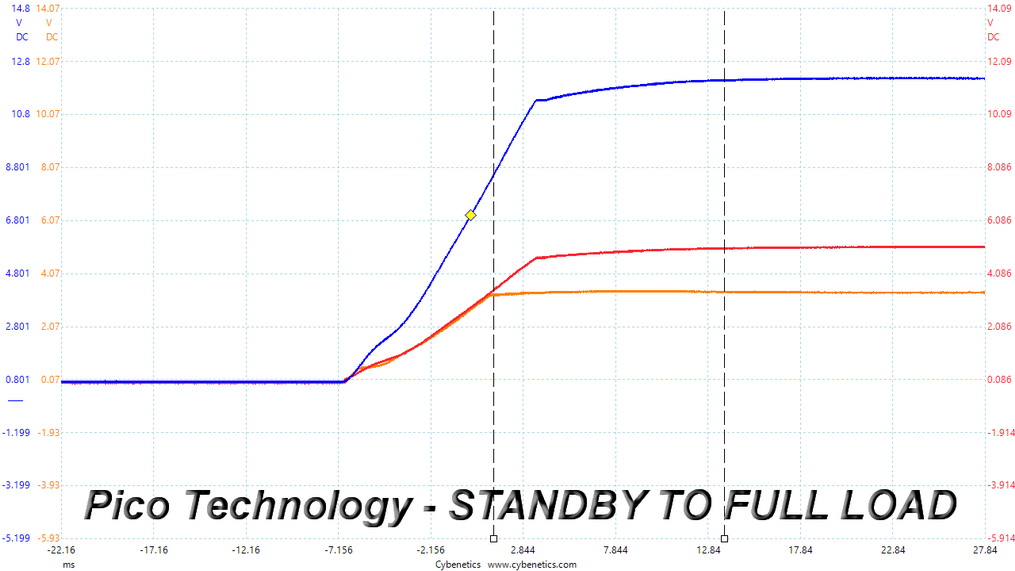
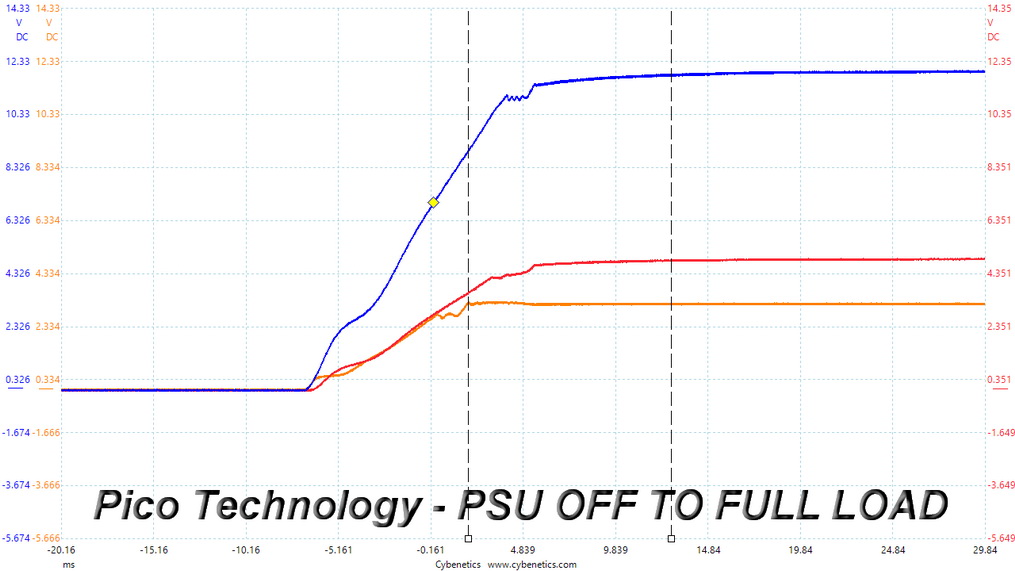
The 3.3V rail's voltage level is dead close to 5V, but it doesn't seem to go above it.
Cross Load Tests
To generate the following charts, we set our loaders to auto mode through custom-made software before trying more than 25,000 possible load combinations with the +12V, 5V, and 3.3V rails. The deviations in each of the charts below are calculated by taking the nominal values of the rails (12V, 5V, and 3.3V) as point zero. The ambient temperature during testing was between 30 to 32 degrees Celsius (86 to 89.6 degrees Fahrenheit).
Load Regulation Graphs
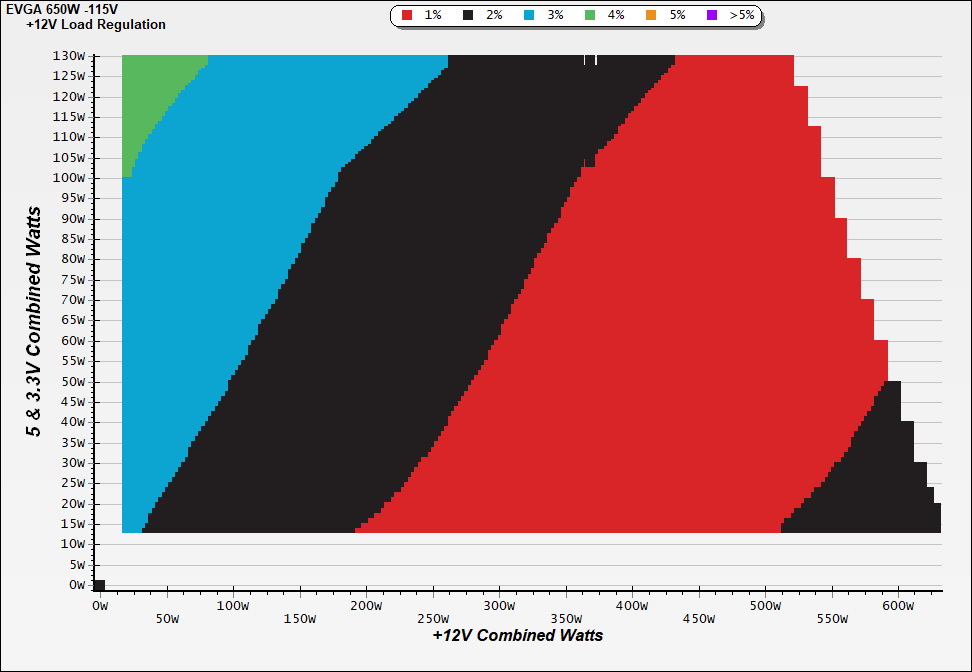
Load Regulation Graphs
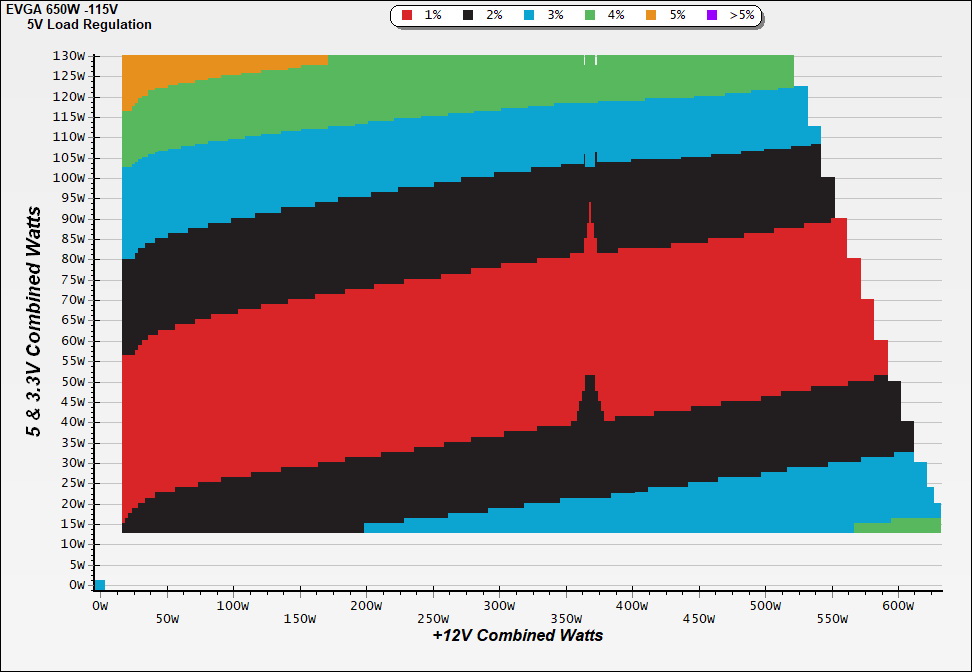
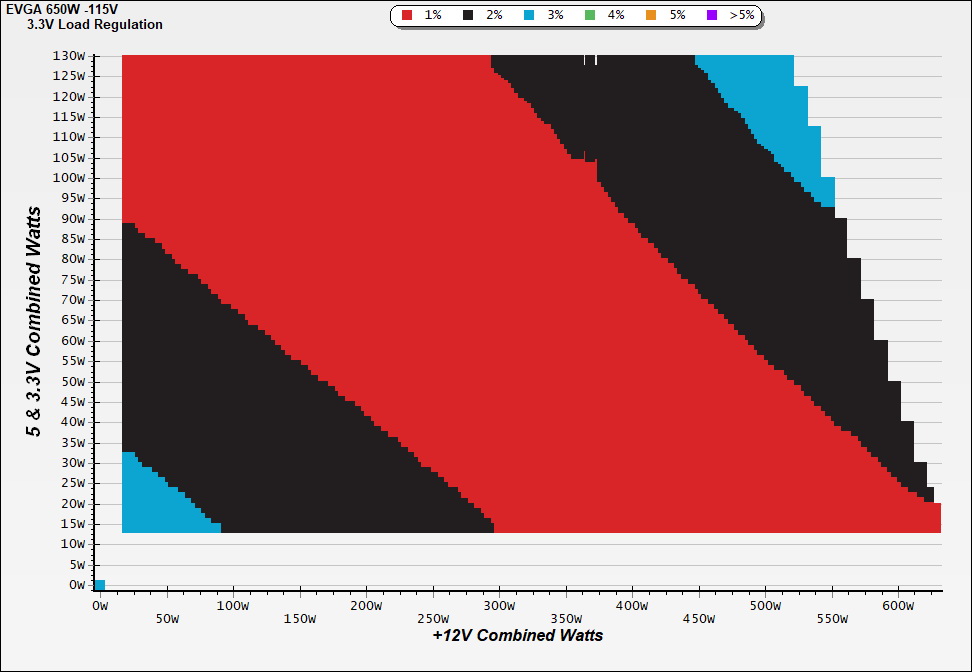
Efficiency Graph
Ripple Graphs
The lower the power supply's ripple, the more stable the system will be and less stress will also be applied to its components.
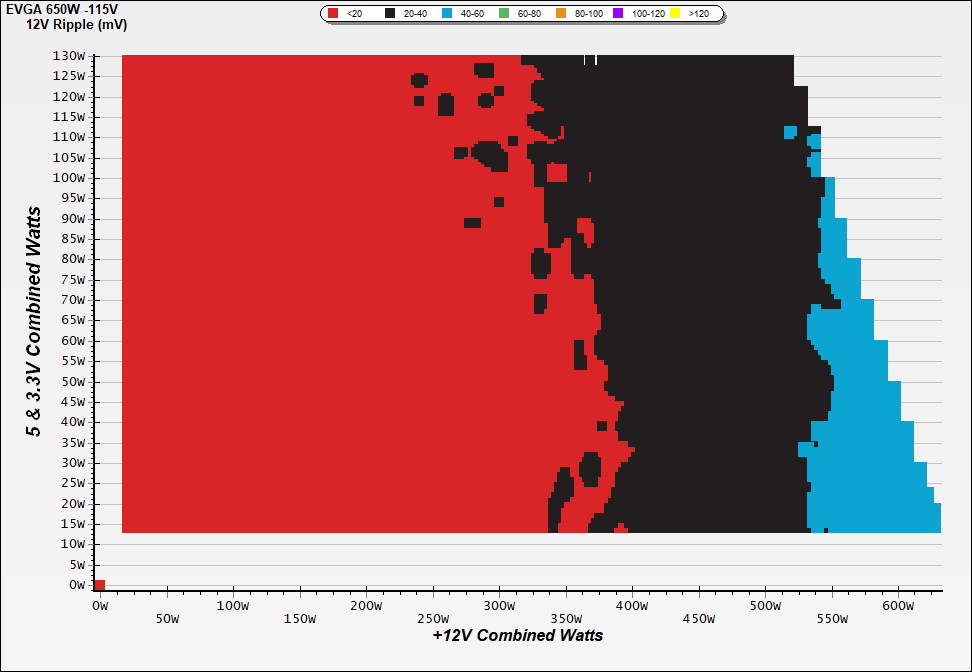
Ripple Suppression Graphs



Infrared Images
We apply a half-load for 10 minutes with the PSU's top cover and cooling fan removed before taking photos with a modified FLIR E4 camera able to deliver an IR resolution of 320x240 (76,800 pixels).
Get Tom's Hardware's best news and in-depth reviews, straight to your inbox.
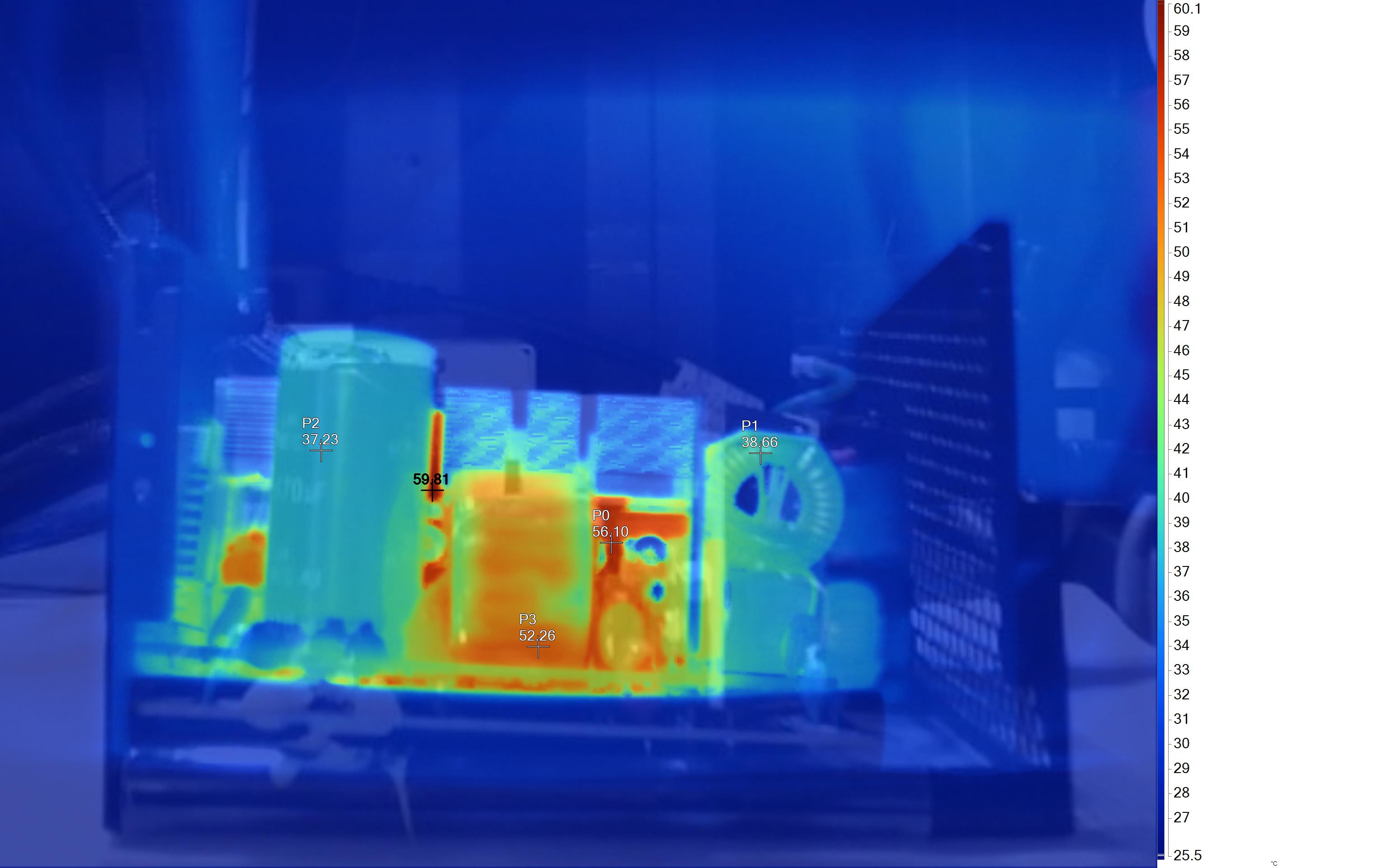
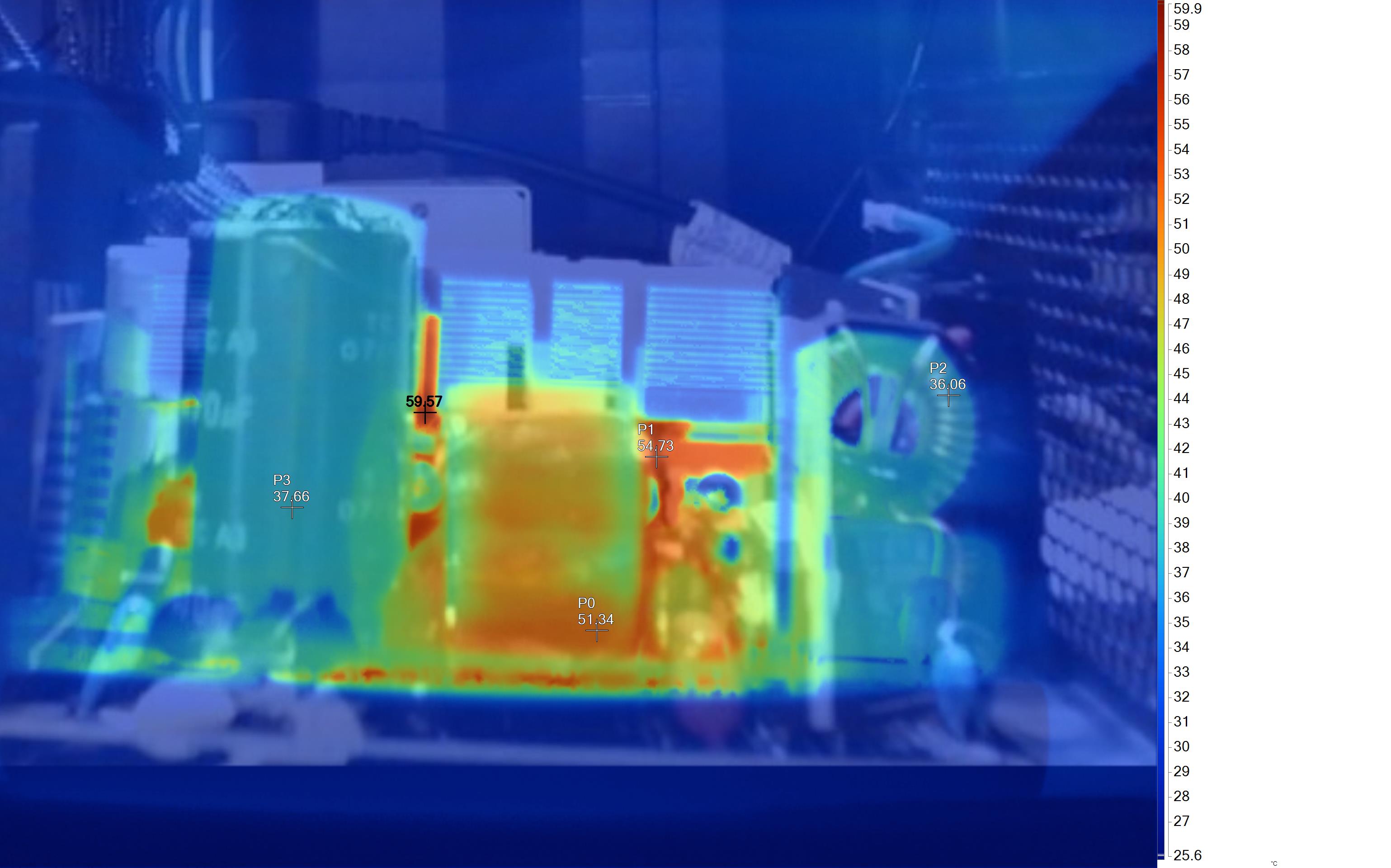
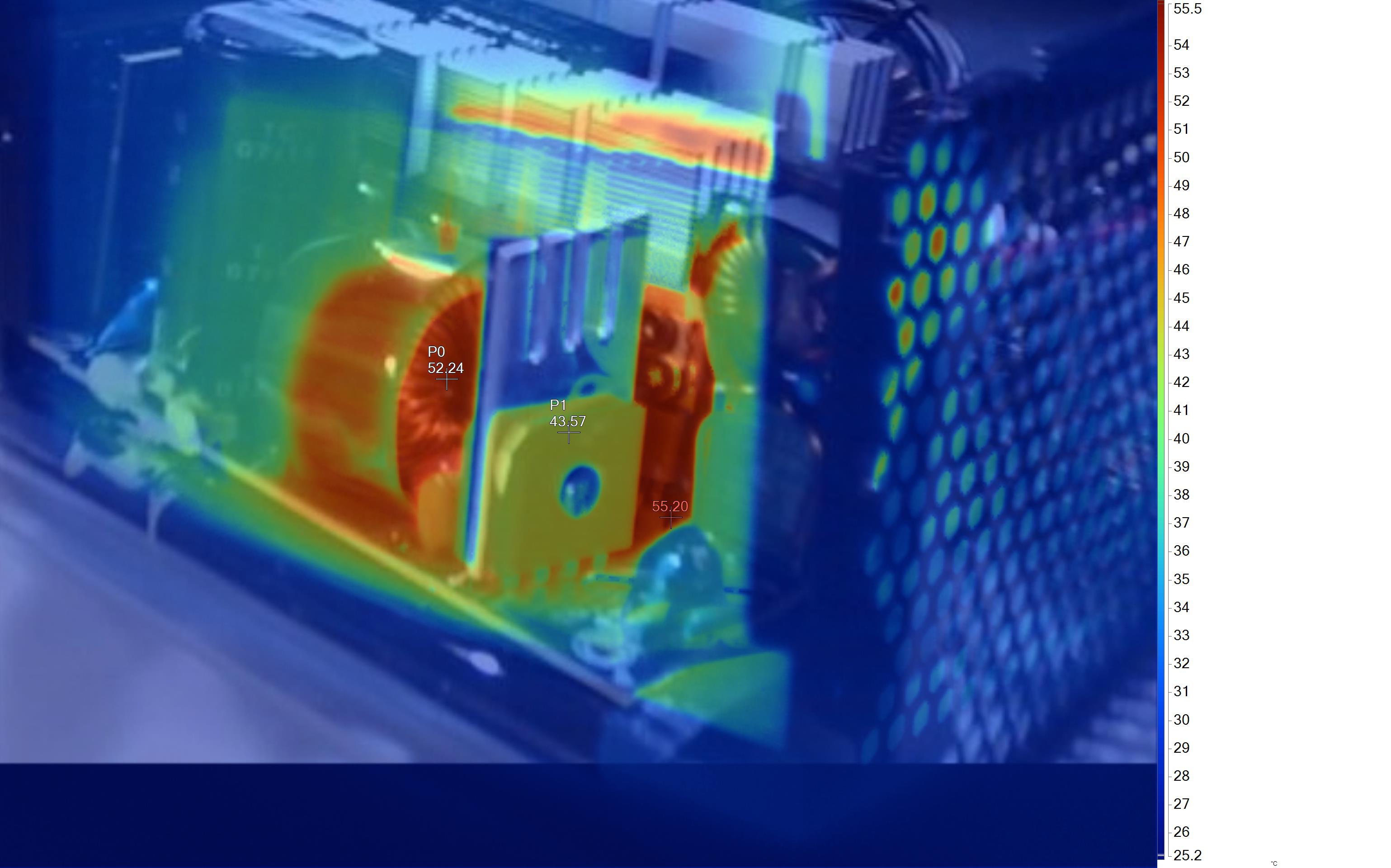

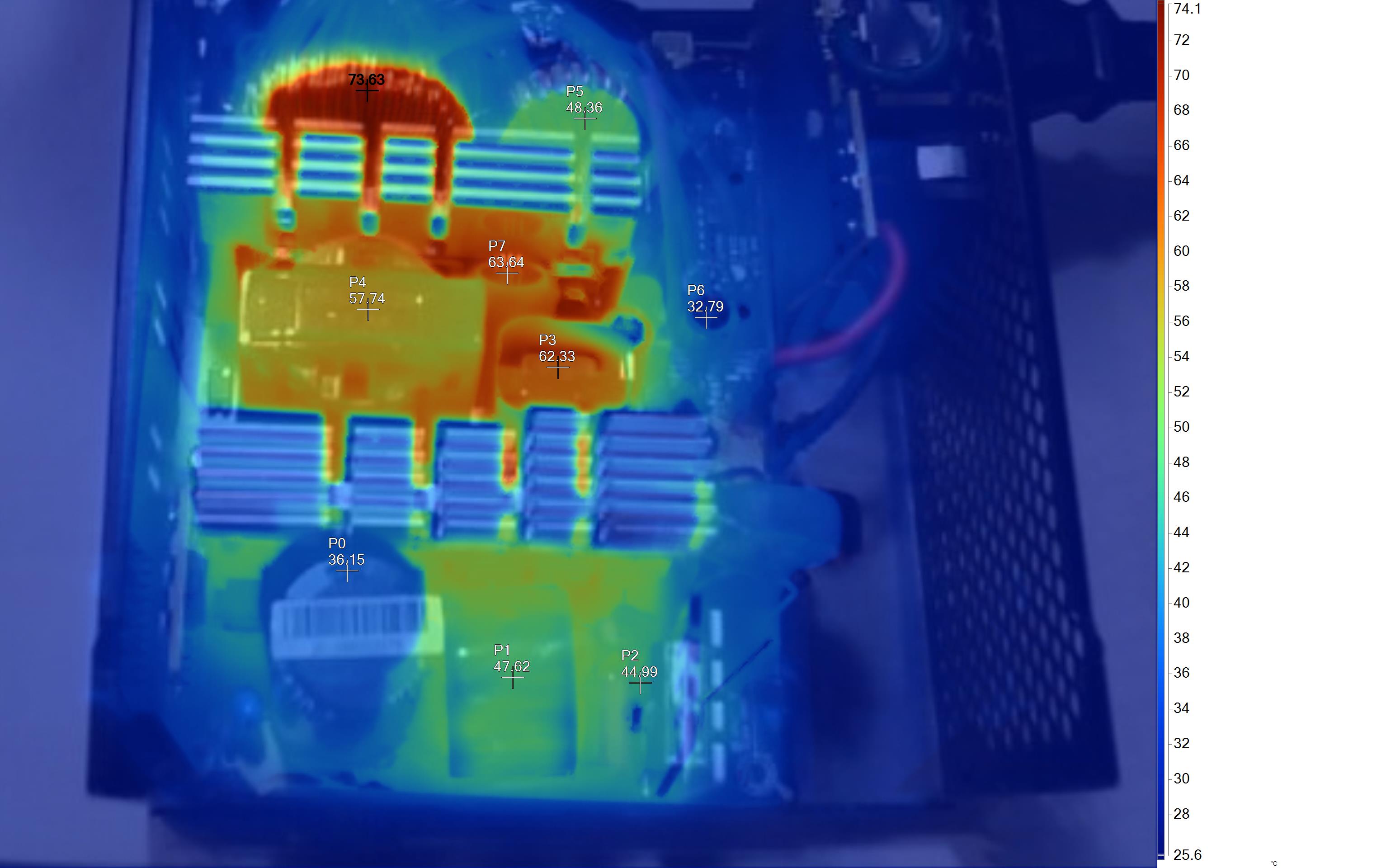
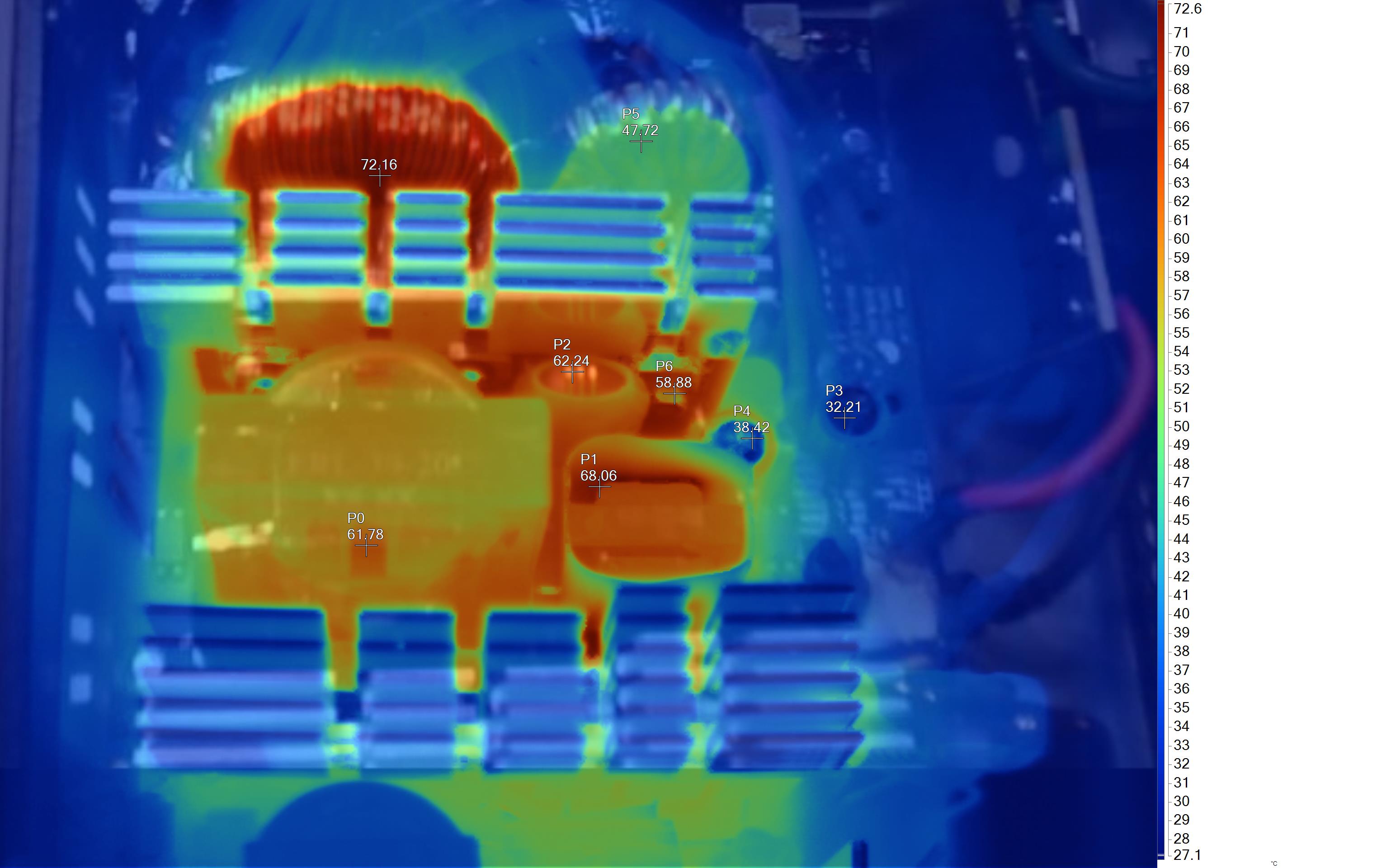



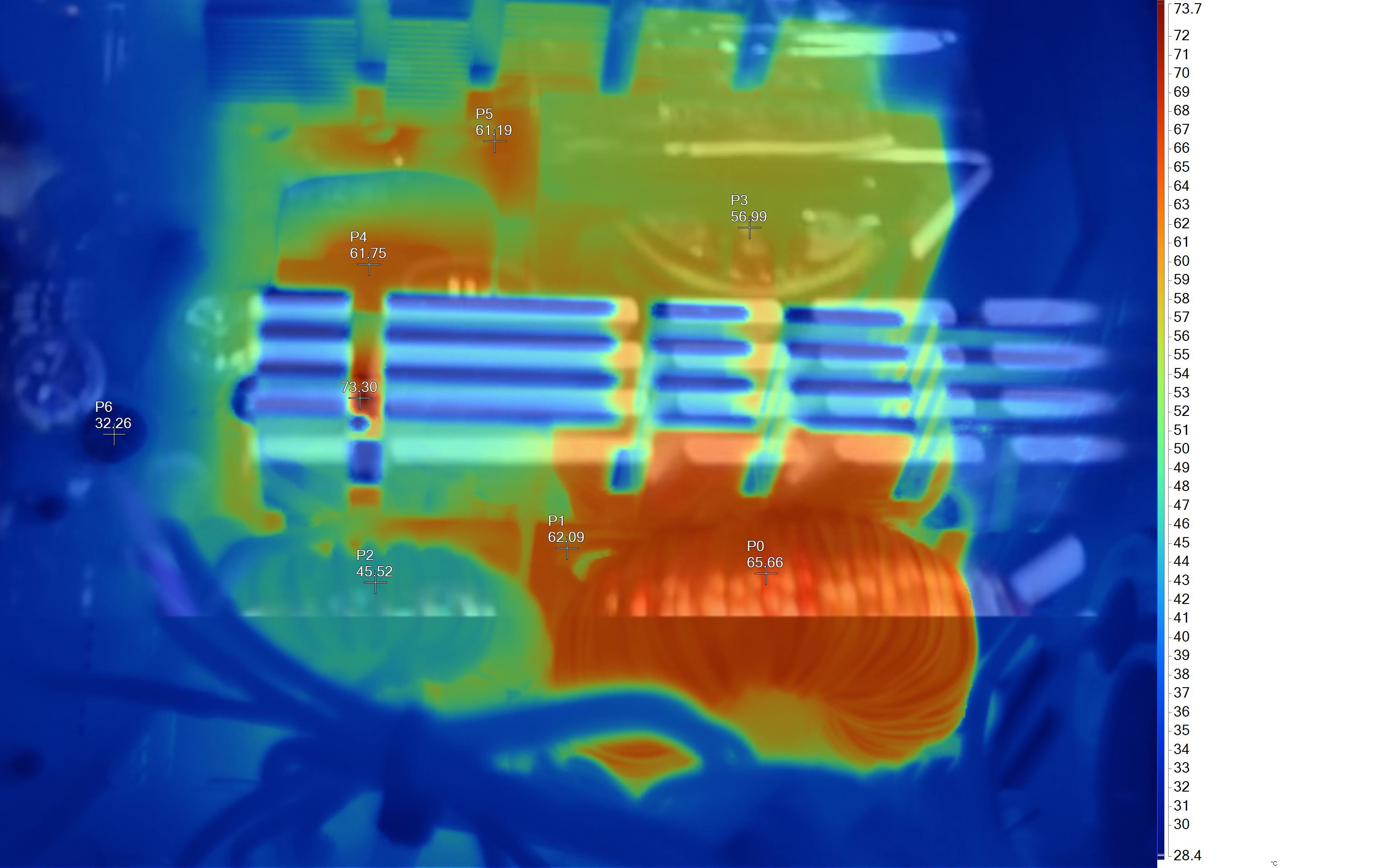
The APFC converter and the bridge rectifier have low operating temperatures, which also applies to the main transformer. The 12V/5V coil on the secondary side is the hottest part, at 74 degrees Celsius.
MORE: Best Power Supplies
MORE: How We Test Power Supplies
MORE: All Power Supply Content
Current page: Protection Features, DC Power Sequencing, Cross-Load Tests and Infrared Images
Prev Page Load Regulation, Hold-Up Time, Inrush & Leakage Current, Efficiency and Noise Next Page Transient Response Tests, Timing Tests, Ripple Measurements and EMC Pre-Compliance Testing
Aris Mpitziopoulos is a contributing editor at Tom's Hardware, covering PSUs.
-
Archaic59 Just another POS on the endless pile that we have to warn people about. Who could even use it? It's not for a gaming system and how many people really need 650 watts in a home office system? I remember when I used to recommend EVGA power supplies regularly. Yeah, the Super Flower days, which are long gone. RIP EVGA.Reply -
DSzymborski In fairness, even when EVGA had PSUs made by Super Flower and SeaSonic, the N series still totally sucked then as well.Reply -
maxamillionfeettall "EVGA states that the PSU's fan has a sleeve bearing, but I broke it apart and found an inferior rifle bearing."Reply
Rifle bearing is just a modified sleeve bearing and is superior to plain sleeve bearings iirc. It's even stated in the psu 101 article, so idk why it's stated as inferior to plain sleeve bearing this time around.
